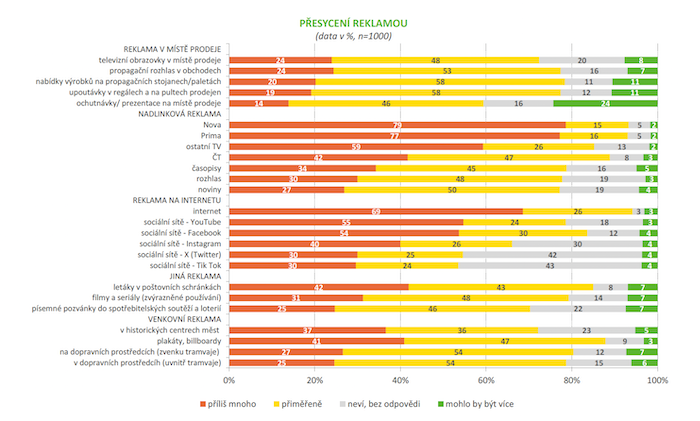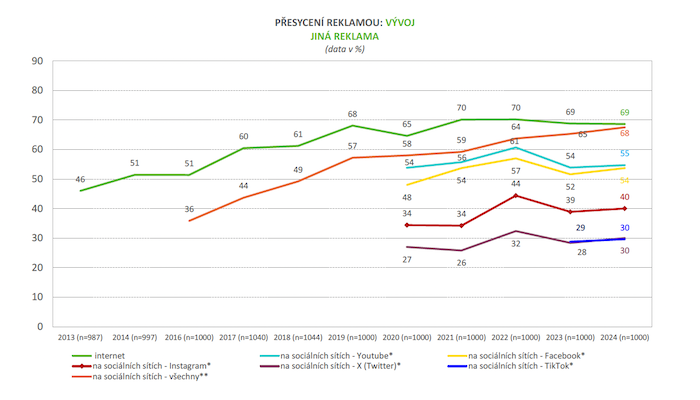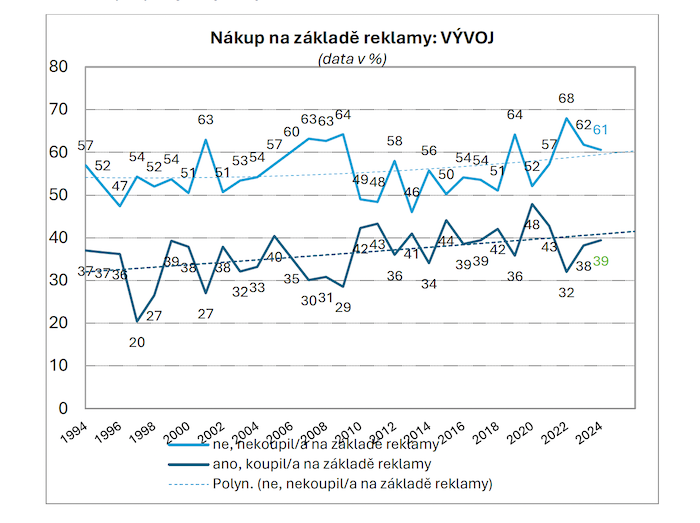The proportion of positive characteristics decreased during the survey, but there were no major changes compared to the previous year. Advertising as a part of modern life is more often mentioned by young people and those who belong to the "group" of those who love advertising. The older age group and those with a university education are more likely to agree that advertising encourages unnecessary consumption.
Around 40% of the population 'admits' to being influenced by advertising this year, which corresponds to the percentage of those who say that advertising helps them in their purchasing decisions. Throughout the survey, the percentage of people admitting to advertising influenced purchasing has averaged between 30-45%. It can be assumed that many people do not 'admit' to advertising influenced purchasing, either because they are not aware of it or because they do not want to admit it. The most common types of advertising purchases are food, beverages, electronics and cosmetics
Czechs are generally over-saturated with advertising, most of it on commercial TV, while they would welcome more at the point of sale, according to this year's wave of the Czechs and Advertising study
There is too much advertising, according to Czechs. People feel most over-saturated on commercial TV, the internet and social media. On the other hand, advertising at the point of sale - especially tastings and presentations - is perceived positively. A quarter of the population would even "welcome more of them". Up to 39% of people are guided by promotional materials when shopping at the point of sale. This is according to the latest study Czechs and Advertising. The research was carried out by ppm factum research for the Czech Marketing Society (CMS), POPAI CE and the Czech Association for Branded Products (ČSZV).
The intensity of advertising on commercial television is more often perceived negatively by older people over 60, university graduates and those who say they "hate advertising". Internet advertising is more often considered too much by university students, but there is no significant difference in terms of age. Product placement is more often perceived as adequate by the younger generation Overall, about half of the population perceives this type of advertising as adequate, with older people and those with primary education more likely to say no. On Facebook, advertising is perceived as excessive more often by the middle generation aged 30-44, and on Instagram by both the young and middle generation, with the young more often considering it appropriate. The 60+ age group was more likely to be silent. Similarly, this age group was more likely to not comment on Twitter and TikTok advertising. Men are more likely to report too much advertising on Twitter and half of women did not comment. YouTube is too overwhelmed with advertising for the young and middle generation, Tik-Tok mainly for the middle generation.
 Source: Češi a reklama study
Source: Češi a reklama study Source: Češi a reklama study
Source: Češi a reklama study Source: Češi a reklama study
Source: Češi a reklama studyYou can see the full report on this year's wave of the Czechs and Advertising study in the material available here: Češi a reklama 2024
Source: mediaguru.cz

